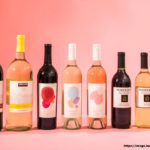
While most of the food and beverages we consume taste best when fresh, wine is quite a different story. Wine needs time to age to bring out the flavor. Anyone that drinks and serves wine must be able to store it properly. Not only does this maximize the taste of each bottle of wine, but it also prevents it from going sour when stored for a lengthy amount of time.
For personal use, a small wine rack and wine cooler are recommended. Businesses such as restaurants and wine distributors often rent special climate-controlled lockers for their wine storage needs. These off-site lockers are an affordable alternative to the costs of building and maintaining temperature-controlled storage areas and walk-in coolers, especially when limited space is available. But whether you are a small-time hobbyist or a large business, these wine storage principals apply to everyone:
1. Wine needs to be stored horizontally
Many people mistakenly store their wine in an upright position. After all, when a bottle is standing vertically, it fits into the refrigerator or cupboard better, and won’t accidentally roll around when on the shelf. However, while most beverages are stored this way, it doesn’t work for wine.
It all comes down to the cork. The cork is what seals the bottle and preserves the wine. For the cork to be able to do its job, it needs to remain moist. When a cork dries out, it starts to let in air which ruins the bottle of wine. By laying the bottle of wine sideways, the wine is always in contact with the cork which prevents it from drying out.
2. Wine needs to be still
For wine to age properly, it needs to be still. When a bottle of wine is shaken or stored in a location exposed to vibrations, the wine can’t settle. This ruins the flavor and quickly over-ages the wine.
3. Wine needs the proper temperature
Storing wine at the proper temperature can be a little tricky. This is because different wines require different temperatures. Your wine should do fine within a certain temperature range, as long as a constant temperature is maintained. Whether you’re storing wine at 55 degrees or 65 degrees, just make sure to keep the temperature the same at all times. Wine that gets cold at night and warms up during the day will not last very long.
Red wines are served at room temperature and should be stored around 60 degrees Fahrenheit. Avoid temperatures above 70 and below 50 degrees Fahrenheit.
White wines and the blush varieties are served chilled and should be stored in a wine cooler. Try to target a temperature of 50 degrees. Temperatures in the upper 40s will do fine. However, it’s worth noting that household refrigerators are too cold for properly storing white wine. Purchase a small wine cooler instead.
4. Wine needs humidity
Wine should be stored at approximately 70% humidity. Like temperature, consistency is key when it comes to humidity levels. Anywhere from 55-80% humidity will work fine, as long as the humidity level is stable and doesn’t fluctuate.
5. Wine needs darkness
It’s important to keep your wine away from too much light. A nice, dark room is the perfect place to store your wine. Red wines can handle light better than white wines, but both can be damaged by direct sunlight.
Happy Wine Storing!
Properly storing wine is a science and an art. Whether you’re storing a few bottles of wine at home or large quantities for a business, the same concepts apply. Homeowners can store red wine in a cool dark room and should use a small wine cooler for their whites and blushes. Restaurants and wine sellers operating at a larger scale often rent climate-controlled wine lockers for their storage needs.
Wine storage can be a little tricky, but it’s not overly difficult. For best results, store your wine horizontally so the cork doesn’t dry. Maintain constant, appropriate temperature and humidity levels. Avoid sunlight and keep your wine free from vibrations. If you follow these steps, your wine bottle will wait happily until it’s ready to be opened.








